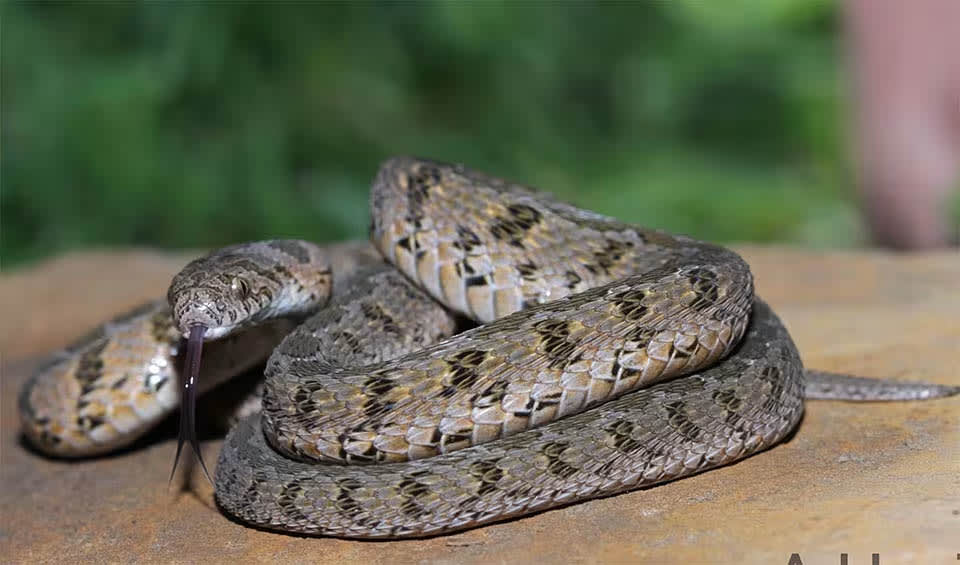Found mainly in sub-Saharan Africa, this non-venomous snake is one of the few animals in the world that feeds almost exclusively on bird eggs.
One of the most distinctive features of the common egg eater is its ability to consume eggs that are much larger than its head. Unlike many other snakes that feed on various types of prey, the common egg eater’s entire feeding mechanism is tailored for eating eggs. Its incredibly flexible jaw allows it to stretch its mouth wide enough to swallow an egg whole. Once the egg is inside, the snake uses specialized bones in its throat, called hypapophyses, to break the eggshell. These bones press against the eggshell as the snake’s muscles contract, cracking it open so that the snake can then swallow the liquid contents. After consuming the egg’s contents, the snake regurgitates the empty shell, making it an efficient eater.
One of the most interesting aspects of the common egg eater is its behavior when threatened. Despite being harmless, the snake has evolved to mimic more dangerous species as a form of defense. When it feels threatened, it can flatten its body, hiss loudly, and make itself appear larger and more intimidating, similar to how a venomous snake like a cobra might behave. This mimicry often deters potential predators, even though the common egg eater is completely non-venomous and poses no real threat.
The common egg eater also has the ability to go for long periods without eating. Because bird eggs are not always easy to find, especially outside the breeding season, the snake has adapted to survive on infrequent meals. When it does find a nest, it can consume several eggs in one sitting, which provides it with enough energy to sustain itself until it finds another nest.
Distribution
 Angola
Angola Botswana
Botswana Burundi
Burundi Cameroon
Cameroon Central Af. Rep.
Central Af. Rep. Chad
Chad Congo-Brazzaville
Congo-Brazzaville DR Congo (Kinshasa)
DR Congo (Kinshasa) Djibouti
Djibouti Eswatini
Eswatini Ethiopia
Ethiopia Kenya
Kenya Lesotho
Lesotho Mozambique
Mozambique Namibia
Namibia Rwanda
Rwanda Somalia
Somalia South Africa
South Africa South Sudan
South Sudan Sudan
Sudan Tanzania
Tanzania Uganda
Uganda Zambia
Zambia Zimbabwe
ZimbabweAnything we've missed?
Help us improve this page by suggesting edits. Glory never dies!
Suggest an editGet to know me
Terrestrial / Aquatic
Altricial / Precocial
Polygamous / Monogamous
Dimorphic (size) / Monomorphic
Active: Diurnal / Nocturnal
Social behavior: Solitary / Pack / Herd
Diet: Carnivore / Herbivore / Omnivore / Piscivorous / Insectivore
Migratory: Yes / No
Domesticated: Yes / No
Dangerous: Yes / No




